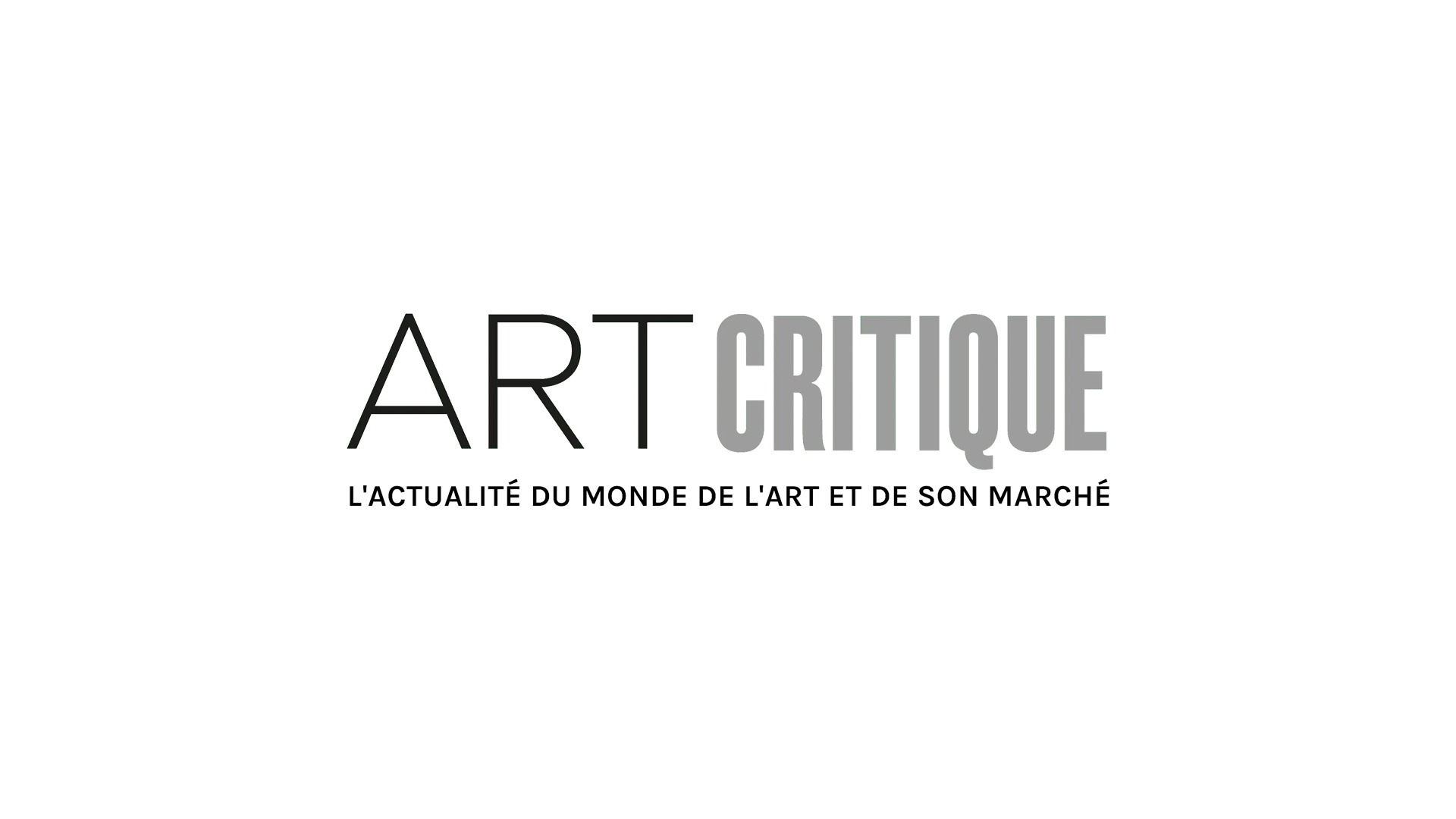When Woman in Gold debuted in 2015, it brought to life the grueling process, albeit glamorized for the movie screen, of restitution. Starring Helen Mirren and Ryan Reynolds, the movie follows Maria Altmann (played by Mirren) who, with the help of Randy Schoenberg (Reynolds), her lawyer, fights for the return of a portrait of her aunt, Adele Bloch-Bauer. The portrait, of course, is Gustav Klimt‘s 1907 rendering of Bloch-Bauer. It’s a portrait that is mesmerizing for its use of gold leaf and the expression on Bloch-Bauer’s face. The portrait was and is one of Austria’s prize possessions, one that was wrongfully stolen from the Bloch-Bauer’s heirs during World War II. The movie traces the true story of Altmann, who took Austria, as a country to court, and in a miraculous turn of events, won.
The movie was not only a harrowing story but also a glimpse into the world of restitution and the nasty business it so often is. It, along with The Monuments Men, release a year earlier, brought the past to the present. Woman in Gold showed audiences that WWII’s wake continues to engulf people, particularly those whose family’s possessions are still scattered about the world.

Restitution is a tricky beast. On the surface, it seems straight forward: property that was wrongfully taken is returned to the rightful owners. Unfortunately, it is anything but in the art world. It seems we know that now better than ever. For decades, countries have been urged to return works looted throughout centuries of colonization, war, and oppression. Property, particularly works of art, that were taken by force under the Nazi regime have been increasingly in the spotlight, though, which is Art Critique has taken a closer look at the United States’ Holocaust Expropriated Art Recovery Act.
So what exactly is the Holocaust Expropriated Art Recovery Act of 2016?
On December 16th, 2016, then president Barack Obama signed into law a bill that was overwhelmingly approved, on both sides of the aisle, by the Senate and the House of Representatives. That bill was the Holocaust Expropriated Art Recovery Act, or HEAR Act, for short. Its purpose was to create uniformity amongst the US’s claims process concerning art taken by the Nazis, and those associated with them, during WWII.
The HEAR Act was enacted through Congress to address a number of issues, including what claims would qualify as expropriated art and what, exactly, was grounds for restitution. Most significantly, though, was its mandate to tackle the ongoing issue of statute of limitations.
Until that December day, each individual state in the US was responsible for creating their own statute of limitations for claims made concerning stolen property. Replevin was the usual category for such matters. While stolen art assuredly falls into that category, the HEAR Act creates a more claimant-friendly playing field specifically relating to expropriated art from the Nazi era.
The HEAR Act includes a six-year statute of limitations that does not begin until the property in question is ‘actually discovered’ and ‘knowledge’ of the work in question is obtained. Effectively, this means that the clock does not start ticking when property is stolen, as is usually the case with replevin. Instead, under the HEAR Act, the clock begins when the claimant discovers the work. Thus, if the whereabouts of an artwork have been unknown, the statute of limitations only starts when the work is found allowing claimants more time to create a plan of action for restitution.
In cases of replevin, the rightful title cannot be transferred from the thief to a good will buyer because the thief acquired the work in a wrongful manner. However, if a good faith buyer, for instance a national museum, purchases the stolen work without knowledge of its provenance, after the statute of limitations runs out on the theft, the good will buyer effectively assumes the rightful title. This provides a frustrating loophole for nearly all parties involved and further confounds already chaotic provenances.

During the Nazi Era, artworks were sold under duress and others were forcibly taken, sometimes under the guise of payment for unpaid taxes, from their owners at an alarming rate. Some art was compiled to one day become part of Hitler’s unrealised state art collection while others were deemed ‘degenerate’ by the regime. Some have calculated that as many as one in five western works of art were taken by the Nazis and related parties. Those works were collectively valued at around $2.5 billion in 1945, which would be more than $30 billion today. With thousands of works yet to be recovered, the confiscation of art by Nazis has been called ‘the greatest displacement of art in human history.’
To cover their tracks, the provenances of works were changed and witnesses were silenced so that works appeared to have been justly acquired. In other cases, the provenances were simply unknown. These issues have muddied the waters of thousands of artworks making them more difficult to get back to their rightful owner.
Although the HEAR Act lays out guiding principles for litigation, it also stresses that, when possible, alternative dispute resolution (ADR) should be used. For those who hope to avoid the cost of litigation and the drawn-out process that that can be, ADR is an avenue for negotiation and mitigation that can bring both parties to an agreement without hitting the courtroom. For those who embark on a path of ADR, the HEAR Act’s statute of limitations are applied in the same way to reach a ‘fair and just’ solution. ADR has become more and more common amongst claimants according to the European Shoah Legacy Institute (ESLI).
Like any legislation like this, the act expresses its intent, purposes, and boundaries. To begin, the property that a claimant is seeking restitution for must have been taken between 1933 and 1945, the time when the Nazi regime was active. It defines that ‘actual discovery,’ critical to the statute of limitations set out by the HEAR Act, is recognized as ‘knowledge.’ In turn, ‘knowledge’ is defined by ‘having actual knowledge of a fact or circumstance or sufficient information with regard to a relevant fact or circumstance to amount to actual knowledge thereof.’ Moreover, the act sets forth that its intention is to aid in the return of work that was taken under ‘Nazi persecution,’ defined as ‘any persecution of a specific group of individuals based on Nazi ideology by the Government of Germany, its allies or agents, members of the Nazi Party, or their agents or associates, during the covered period.’
The HEAR Act will continue until January 1, 2027, when it will be voided and US restitution will once again be left up to each state.
Curious how the US got to the HEAR Act? We were, too.
In the US, the HEAR Act was the product of years of conferences and calls for ‘fair and just’ action. You could pinpoint 1998 as the serious, modern start to returning plundered property. Although there were a number of conferences and initiatives to work towards restitution starting as early as 1954 with the Hague Convention, we focus on a few, more recent events.
The Washington Conference is an integral jumping off point. Held in 1998, 44 countries attended the conference where a set of 11 principles, known as the Washington Principles, were set forth and signed. They called for ‘fair and just’ solutions to acts of restitution; however, the principles were not binding as it was recognized that every state involved had their own body of laws in relation to restitution.
In the following years, there would be other conferences and forums building on the Washington Principles and offering more to the process. Resolution 1205, created in 1998, saw the Washington Principles as being too narrow, and thus offered a vaguer mandate but emphasized nation-based solutions.
A few years later, the Vilnius Forum of 2000 addressed Nazi looted art but proposed ‘international expert meetings’ from various countries over a nation-based solution. These meetings would allow for countries to bring together and discuss ways to reach ‘fair and just’ solutions, what helped do that and what hindered that.
The Terezin Declaration of 2009 built on the topic by stressing research to better understand the provenance of potentially looted art. Each of these were non-binding and had no actual repercussions but relied on morality. Thus, there have continued to be instances in which such principles laid out are not followed.
With a complex root system stemming from these conferences, the HEAR Act became one of the US’s most prominent initiatives towards restitution.
Why is restitution so common today?
Despite having been 75 years ago, restitution of works stolen during the Holocaust era are becoming more and more prevalent. Connectivity single handedly leads to more light being shed on a case. It has also meant that claimants have access to more information necessary in tracking down property that may have been elusive in the past.
With the various conferences held in the 1990s and 2000s, institutions have been encouraged to embark on their own research efforts. In 2000, the Museum of Modern Art in New York launched the Provenance Research Project, which voluntarily began looking into the provenance of more than 1,000 works in their collection that were potentially in Continental Europe during the Nazi regime. The MoMA’s research is ongoing.
The Central Registry of Information on Looted Cultural Property 1933-1945 is another research-based initiative, created specifically to fulfil Washington Principle VI (‘Efforts should be made to establish a central registry of such information’). The Central Registry was set up by Ambassador Stuart E. Eizenstat, who was also the host of the Washington Conference, and has provided resources for research and claimants looking for their family’s property or to better understand their lost property’s history and whereabouts.
The availability of resources has meant that claimants have an unprecedented access to information once unknown. These resources, such as the Musées Nationaux Récupération, List of Works of Incomplete Provenance for 1933-1945, or the Commission for Provenance Research, make research more affordable; now you can research at home in your kitchen and pajamas without costly trips domestically and abroad. Most of the time, such documentation is also available in multiple languages.
Excitingly, records once unavailable have been unsealed thanks to acts of transparency and the passage of time. Following the fall of the Iron Curtain, for example, once classified documents have been reopened making way for a rush of information. Expropriated property has become something of a hot topic, too. It is now recurring in literature published by researchers and scholars dedicated to tracing the wake of the Nazi regime. Such tools have undoubtedly proved invaluable to those interested in finding the truth.
While these tools have certainly helped claimants towards their end goal, in many cases, the waters have only become murkier in others. Just because a claimant is able to find more information regarding the artwork in question that does not mean restitution is straight forward. Often times, good faith buyers are reluctant to return works they feel are rightfully theirs. A more difficult path also tends to mean a costlier way, another factor that bars claimants from following through with restitution. Then, making matters more difficult, there are the inconsistent rules and laws concerning restitution around the globe, finding an artwork does not mean it will come home.
The HEAR Act in action
The HEAR Act, though enacted on December 16, 2016, was made semi-retroactive, in that all cases currently underway could look into the possibility of using its mandates. Additionally, in special instances, if a case was previously been barred due to a few different reasons, mostly pertaining to ‘knowledge’ and statute of limitations, it has potential for resuscitation under the HEAR Act.

The first major moment for the act, though, came in 2017 when Judge Charles E. Ramos ruled in favour of claimants seeking the return of two works by Egon Schiele.
The saga all began with Franz Friedrich ‘Fritz’ Grünbaum, a famous Austrian cabaret singer who also loved art. During his life, his collection grew and at one point included more than 400 works. A vocal critic of the Nazis, Grünbaum was interned at Dachau concentration camp in the late 30s where he would die in 1941. During the Nazi era, Grünbaum’s collection, which at that point contained 81 works by Schiele and the largest collection of his works, was confiscated.

For years, now, Grünbaum’s heirs have fought to bring home works that were once part of his collection; however, they have faced a lot of push back and failure in the process. In 2005, an attempt to restitute Seated Woman With Bent Left Leg (Torso) by Schiele was thwarted when the court deemed that too much time had passed for Grünbaum’s heirs to lay claim to it. In 2015, Grünbaum’s heirs began the process of seeking the return of Schiele’s Woman in a Black Pinafore (1911) and Woman Hiding her Face (1912). Thanks to the HEAR Act, the case was heard and, in his ruling, Judge Ramos stated: ‘The HEAR Act compels us to help return Nazi-looted art to its heirs […] the gut-wrenching process by which Mr. Grünbaum’s property was looted.’
Ultimately, Ramos found that the works were sold under duress and later sales were not credible, although they may have been done in good faith. After the 2017 ruling, the case was appealed but in July 2019, a New York appellate court ruled in favour of Grünbaum’s heirs ordering that the works be returned to them. At that time, Judge Ramos told Art Critique that he is ‘always optimistic’ when his rulings are appealed but he was ‘proud’ of the appellate court’s ruling.
This case became the first time that the HEAR Act played a role in the successful restitution of an artwork.
Ultimately, a claimant seeking restitution of an artwork or property expropriated by the Nazis or related entities during World War II face an immense uphill battle. The cost and time is unbelievably daunting and more times than not, it’s a process that brings out the worst in people. As more information becomes available, the process may become more difficult as kinks in the system are hammered out in earnest, but the HEAR Act, for all its pros and cons, adds some clarity and consistency to the US’s role in restitution, at least for a while.





